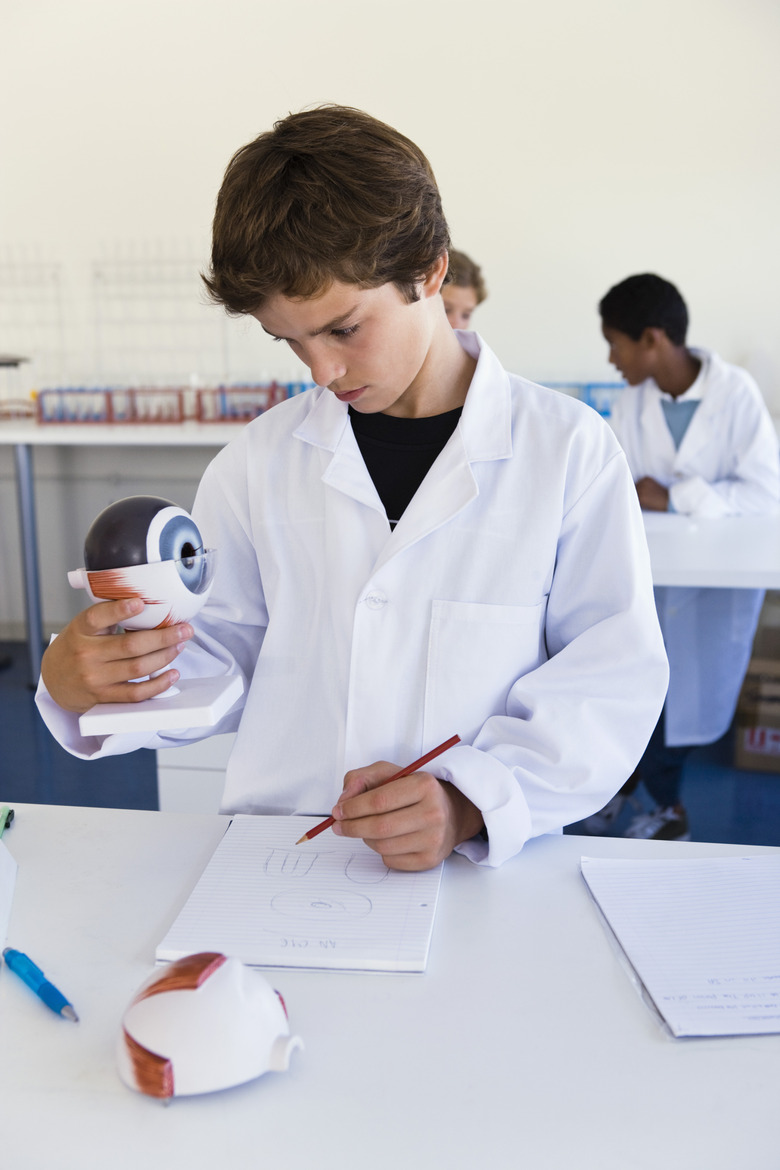Laboratory Observation Methods
Laboratory observations happen when a person gathers and records information about an experiment within a laboratory setting. Examples of lab observations include noting the formation of crystals and recording survey results. There are several ways of conducting observations in a lab, and the method that you choose often depends on the type of experiment you are doing.
Natural and Contrived
Natural and Contrived
Natural observations are observations that you make of subjects while they are in their real-life or natural environment. You have little control over your subjects when performing this type of observation, so gathering the right type of data may be more time consuming, but the information gathered accurately reflects your subjects' natural behavior. Using the natural observation method can be difficult in a laboratory setting, as subjects typically are not in their natural setting in a laboratory environment. On the other hand, contrived observations are conducted in settings created by the observer, as within a laboratory. Contrived observations offer you more control over the data gathering process, but the data may not reflect real-life phenomena.
Disguised and Non-Disguised
Disguised and Non-Disguised
Within a laboratory setting, scientists can conduct both disguised and non-disguised observations. Disguised observations are made when the subject does not know he or she is being observed. Subjects tend to act more naturally during disguised observations, and the information collected is more apt to reflect their true reactions. There are ethical concerns with this method of data gathering, however, because the subject might not want private information recorded by the researcher. Non-disguised observations, on the other hand, occur when the subject knows that observations are taking place. The ethical concerns are alleviated but you may not get accurate or true information when using this method.
Direct and Indirect
Direct and Indirect
Laboratory observation can use direct or indirect observation methods. Making a direct observation is looking at or studying an actual behavior or occurrence instead of the result of that behavior or occurrence. An indirect observation happens when the researcher studies the results or consequences of an occurrence instead of the actual occurrence itself. An example of a direct observation is watching birds feeding and taking note of what types of food they eat. An example of an indirect observation is analyzing bird droppings to see what type of foods they ate.
Human and Mechanical
Human and Mechanical
Within a laboratory setting, scientists can make human or mechanical observations. Human observations are made when the observer or researcher collects data using his eyes, ears, nose and other senses. Mechanical observations are those made using mechanical devices such as video cameras, microscopes and weather balloons. After data has been collected by the devices, it is interpreted by the researcher. Mechanical devices offer a way of collecting more precise data than simply through human observations.
Cite This Article
MLA
Jackson, Percila. "Laboratory Observation Methods" sciencing.com, https://www.sciencing.com/laboratory-observation-methods-10063607/. 24 April 2017.
APA
Jackson, Percila. (2017, April 24). Laboratory Observation Methods. sciencing.com. Retrieved from https://www.sciencing.com/laboratory-observation-methods-10063607/
Chicago
Jackson, Percila. Laboratory Observation Methods last modified August 30, 2022. https://www.sciencing.com/laboratory-observation-methods-10063607/
